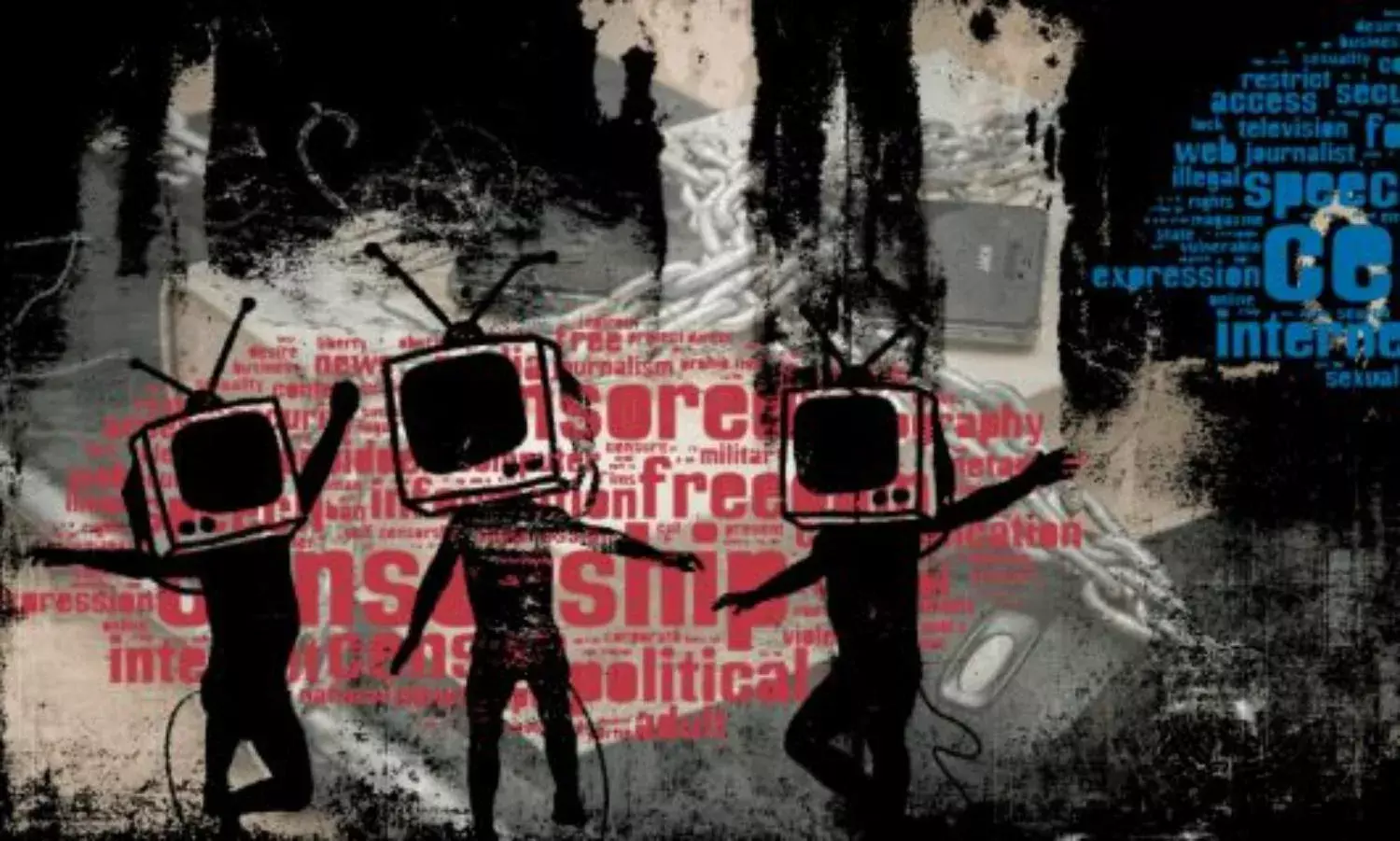Indian Media Was Written In the Script of Yesteryears
“Leaping flames of hell”

There have been many but let me cite just two reactions from the family to Justices D.Y. Chandrachud, Indu Malhotra and K.M. Joseph’s utterances restraining Sudarshan TV from telecasting its “UPSC Jihad” show. A relative mailed a couplet comprehensive in its simplicity:
“Door insaan ke sar se yeh musibat kar do
Aag dozakh ki bujha do, use jannat kar do”
(Remove this menace hovering over our heads,
Douse the leaping flames of hell; make it a paradise)
“Leaping flames of hell”: that is how a majority of Indian TV shows register with petrified Muslims. TV news is daily mortification; lynchings happen outdoors. The Supreme Court’s quest for “some mechanism” for self regulation of the media brings her hope. “Cricket will be played within a well measured boundary?” Not too much to expect.
The other reaction, from a younger relative is more cynical: if the Supreme Court had sharp instincts, it would have taken suo moto note of the outrage, before Sudarshan TV was able to telecast even one episode.
Incipient communalism was part of the Republic from the very beginning. Contentious issues on that score, however, did not come up when the electronic media consisted only of Doordarshan. DD, launched in the mid-70s, faced roadblocks too – as in the screening of Tamas, based on a novel by Bhishm Sahni, directed by Govind Nihalani. Centered on Partition, the director pulls no punches on exposing communalism on all sides. Since majoritarian communalism had never been placed under the scanner with such candour in independent India, there was a furore. Screening was stopped. Only when Justices Bakhtawar Lentin and Sujata Manohar of Bombay High Court cleared the serial was it screened.
Sudarshan TV’s “UPSC Jihad” is in the words of Justice Chandrachud, a “rabid” vilification of Muslims. The channel felt encouraged to cross the red line because this particular line is considered kosher in the current political atmosphere by mainstream channels as well as fly-by-night media operators.
An anti -Muslim edge is a perceived requirement of Prime Minister Narendra Modi’s march towards Hindu Rashtra. But an anti Muslim edge in the media has antecedents which predate Modi. Four apparently disparate events stirred the cauldron of communalism.
In 1990, the Soviet Union collapsed. The disappearance of a column in the international system on which India had depended, plus an unprecedented economic crisis, caused then Prime Minister P.V. Narasimha Rao and Finance Minister Manmohan Singh to lurch towards Washington and swiftly embark on liberal economic policies.
With the new market economy came consumerism and the need for multiple TV channels to accommodate the burgeoning advertising. Remember, when the Babri Masjid fell in December 1992, there was only Doordarshan to televise the news.
About this time Mandal versus Kamandal, caste versus communalism spiraled out of the control. It is pointless speculating whether a mushroom growth of channels went some distance in amplifying the new, energetic, communal politics. Market and identity politics is a separate study. Internal politics, however communal, would have been amenable to management.
The real problem arose when globalization, spurred on by unbridled capitalism caused even Barack Obama to ask in retrospect: “Did we mishandle globalization?” I have often wondered if Ghalib’s imagery is applicable:
“Rau mein hai rakhsh e umr kahaan dekhiye thamey,
Nay haath bag par hain, na pa hai rakab mein.”
(The steed is in full flight; I know not where it will halt;
I have lost control of the reins and, feet are not in the stirrups.) That was globalization.
Having brought down the Soviet Union, the US put its imprimatur on a Unipolar World Order by embarking on operation Desert Storm in February 1992. In some ways, Desert Storm bared the plans the US had for the future. The most important of these, pertinent to our narrative, was the inauguration of the Global Electronic Media which the Pentagon planned with such stealth that even arch ally like UK found itself flat footed.
BBC’s senior correspondent, John Simpson walked around Baghdad with a lowly satellite telephone while Peter Arnett of the CNN launched the New World Information order from the terrace of Baghdad’s Al Rasheed hotel. For the first time in history, a war was brought live into our drawing rooms.
The unprecedented fire power which I saw from the 14th floor of Al Mansour hotel, remained a nightmare for months. This frightful exhibition, let it always be remembered, divided the world in perpetuity into two hostile sets of audience – the triumphant West and the defeated Muslim world, humiliated yet again. Had multiple channels been operational in India (they were not in 1991-92), would they have been cheering western victory or Muslim defeat? It would have been bad form to pose this query then? Please note how times have changed and why the Supreme Court’s intervention is timely.
The Post 9/11 war on terror transformed itself into a crusade against Islam. Journalistic restraint became a casualty. Geraldo Rivera of Fox News flourished a revolver in front of a TV camera in October 2001 in Afghanistan. “Should I see Osama bin Laden anywhere, I shall finish him off with this”, said he, his finger on the trigger.
The copycat Indian media, now in a phase of rapid expansion, picked up every inflection. When Narendra Modi arrived in Gujarat in October 2001 for his baptism as Chief Minister, the fireworks over Afghanistan, demonization of Osama bin Laden was dominating the airwaves.
Global Islamophobia dovetailed nicely into Indian communalism. The February 2002 Gujarat pogrom produced some excellent TV journalism but the confluence of Islamophobia and hard saffron muffled the murderous events for an attentive global audience.
All Prime Ministers of India from 1947 to the mid-90s depended on traditional forms of mass mobilization, prior to the TV era. A more media savvy prime minister than Narendra Modi there has not been. He played all the strings to arrange for himself a saturation coverage of the 2014 and 2019 elections with expert ease. Crony capitalism was essential and it was easily managed.



